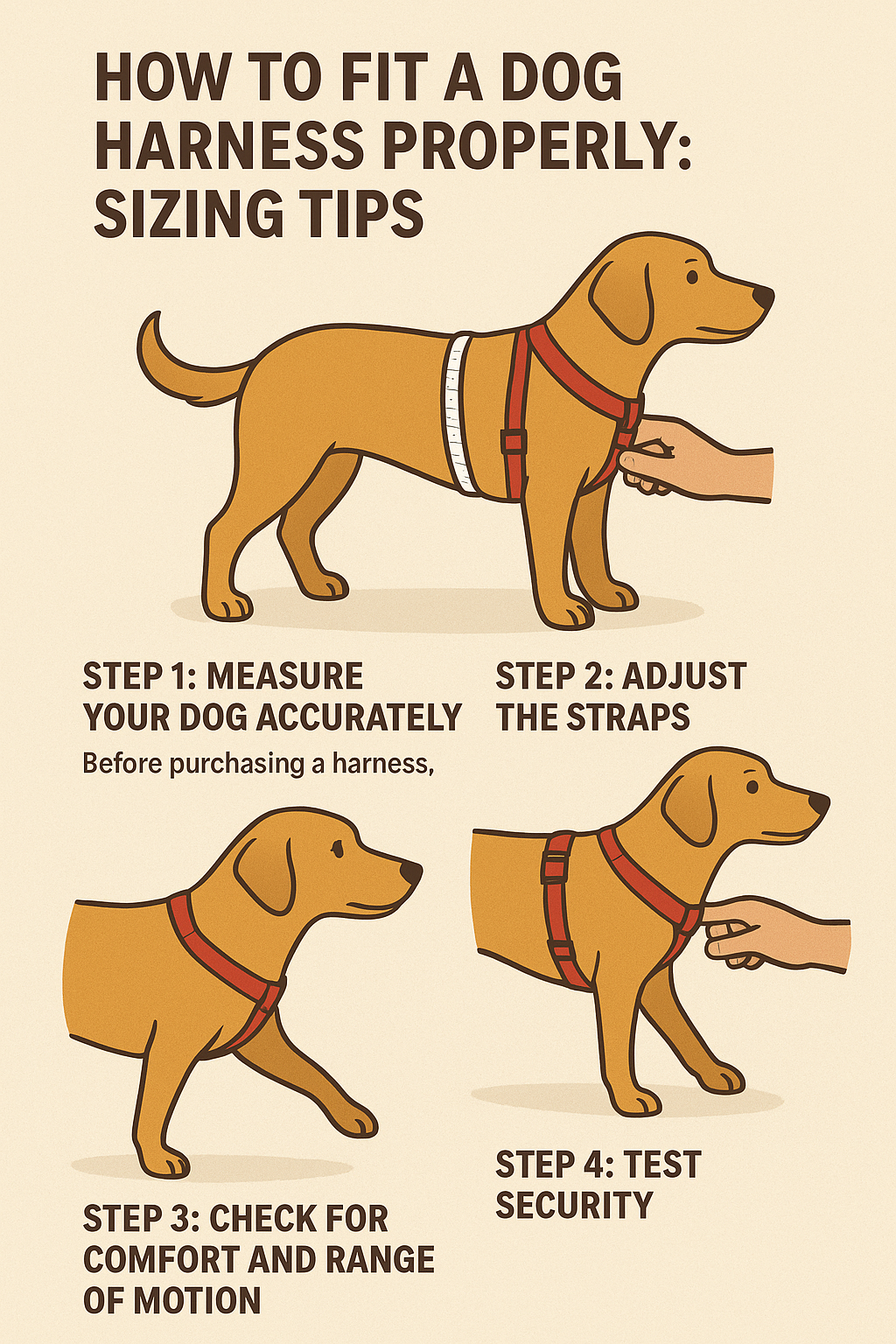Choosing the right harness for your dog is an important part of responsible pet care. A well-fitted harness not only ensures your dog’s comfort but also provides better control during walks and prevents injuries. Unlike collars, which can put pressure on the neck and throat, harnesses distribute force across the chest and shoulders. However, the benefits only come when the harness fits correctly. Here are some practical tips to help you size and fit your dog’s harness properly.
Why Proper Fit Matters
A harness that is too tight can cause chafing, restrict breathing, and make your dog uncomfortable. On the other hand, a harness that is too loose may slip off, leaving your pet vulnerable to accidents. The right fit keeps your dog safe, secure, and comfortable while allowing freedom of movement.
Step 1: Measure Your Dog Accurately
Before purchasing a harness, take precise measurements of your dog. The two most important areas to measure are:
- Girth (Chest circumference): Wrap a flexible tape measure around the widest part of your dog’s chest, usually right behind the front legs.
- Neck circumference: Measure around the base of the neck, where the collar would naturally sit.
Most harness brands provide a sizing chart. Compare your dog’s measurements to the chart to determine the correct size. If your dog falls between sizes, choose the larger one for comfort and adjust accordingly.
Step 2: Adjust the Straps
Once you’ve selected the right harness, it’s time to adjust it. Place the harness on your dog and tighten or loosen the straps until they fit snugly. A good rule of thumb is the two-finger test—you should be able to slide two fingers comfortably between the harness and your dog’s body. This ensures that the harness is not overly tight while still secure.
Step 3: Check for Comfort and Range of Motion
After adjusting, observe your dog while they walk, sit, and play in the harness. The straps should not dig into the skin, and the harness should not rub against sensitive areas like the armpits. Your dog should be able to move naturally without restriction. If you notice any signs of discomfort—such as scratching at the harness or resistance while walking—it may need further adjustment.
Step 4: Test Security
To make sure the harness is secure, gently tug on it once it’s fitted. It should stay in place without slipping over the head or chest. Always double-check the buckles, especially if your dog is active or a strong puller.
Additional Tips
- Choose a harness made of breathable, durable material to prevent irritation.
- Check the fit regularly, as puppies grow quickly and adult dogs may gain or lose weight.
- For dogs with unique body shapes (like Greyhounds, Bulldogs, or Dachshunds), look for breed-specific harness styles for the best fit.
Final Thoughts
Fitting a dog harness properly is an essential step in pet care. With accurate measurements, careful adjustments, and regular checks, you can ensure your dog enjoys comfortable, safe walks every time. Remember, the right harness fit means less stress for you and more enjoyable adventures for your furry friend.


